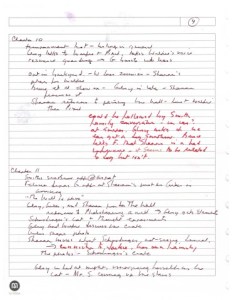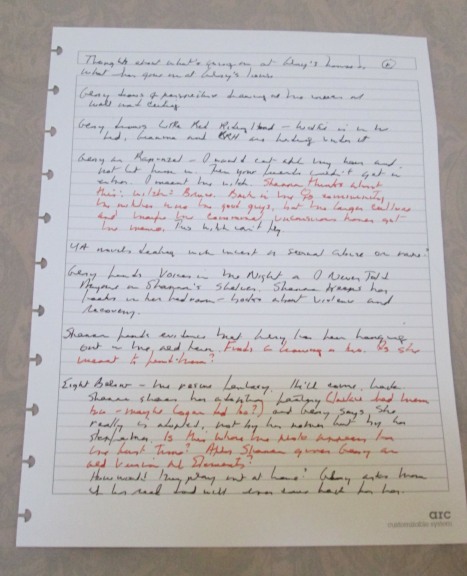Editing nonfiction, I’m always astonished and delighted by the sheer variety of people’s names. Some are common, others unusual. Many hint at where the individual or his/her forebears might have come from — at least the forebears in the paternal line. The names of women are usually plowed under by marriage, though they may resurface in a child or grandchild’s middle name.
Other names are more generic — which in English-speaking countries means “more Anglo-Saxon” — than the people who bear them. Immigrant names were often changed at the border by immigration officials who found the original unpronounceable or unspellable. Individuals change their own names for an array of reasons. Sometimes the grandchildren of immigrants reclaim the ancestral name, though it means they’ll be continually asked how to spell or pronounce it.
One of the first things a small-town newspaper copyeditor learns is that most readers will forgive the occasional error of fact and rarely notice the grammatical gaffe, but if you misspell their names or, worse, the name of one of their kids, they will remember it forever. The first name of one fellow who appeared occasionally in news stories was Kieth. Yep: i before e. As with Triple Crown champ American Pharoah, the impulse to “correct” it was strong, but once I ascertained that “Kieth” was correct, I didn’t give in to it.
I’m jealous of nonfiction writers. They do have to get the names right, but at least they don’t have to make them up.
Fiction writers do.
Naming characters is like titling the work. Some names come easy. Others come hard.
A character in Wolfie, my novel in progress, appeared as Bruce McManus. “Bruce” has stuck, but “McManus” was a placeholder. His real name didn’t show up on its own. I had to poke around my brain looking for it.
What made this difficult is that Bruce is not a nice man. He’s not-nice in a particularly loathsome way, but his particular kind of loathsomeness is not all that rare.
What was wrong with McManus? Well, I wanted a generic name that would not be associated with a specific ethnic or national group. “Mc-” suggests Irish or maybe Scottish. Bruce comes across as WASP and probably is. When it comes to names, I have a couple of ruts that I regularly fall into, and one of them is names beginning with M. A main character in this novel is Shannon Merrick. Up the road from her is a couple named Morris.
Another of my ruts is trochees — names of two syllables with the accent on the first: Shannon, Merrick, Morris . . . I’ve also got a few three-syllable names going — Segredo, Kelleher, Correia, McDermott — but not many with only one syllable. So I started brainstorming single-syllable, generic names.
Trouble was, nearly all those single-syllable names were good English words: Black, Brown(e), White, Green(e), Stone, Hunt, Young, Pierce . . . Their meanings and connotations were likely to color (sometimes literally) readers’ perceptions of the character, and raise the possibility that this was intentional on my part. Nothing wrong with that: I’ve done it myself. In my first novel, The Mud of the Place, Jay Segredo got his surname for a reason. “Segredo” in Portuguese means “secret.” But with this Bruce character? No.
So while I was out walking one morning and thinking about something entirely different, “Smith” slipped into my conscious mind. Bruce Smith. Bruce Endicott Smith. I had it: a one-syllable surname that was about as generic as you can get in English and that didn’t begin with M.
Some characters show up with names firmly attached. How to name the ones that don’t? There are plenty of options. Some writers open the phone book at random then let their forefinger do the picking, once for the first name, once for the last. I often discover names by listening to the characters talk, either to themselves or to each other. My novel is set in a particular place — Martha’s Vineyard, Massachusetts, New England, USA — which limits my options somewhat. If your story is set in Croatia, Armenia, Brazil, or Japan, or if one of your characters comes from somewhere else, there are names lists galore on the Web for different places and different languages. If you don’t know the place or language, though, take care: the name you choose may have associations you don’t know about. (“Bush” was not one of the monosyllabic names I considered for Bruce.)
For fantasy and science fiction writers the possibilities might seem endless, but not really: readers have a harder time with names they can’t pronounce or remember easily.
Do names really matter all that much? “A rose by any other name would smell as sweet,” true, but if roses were called rhododendrons, they probably wouldn’t show up in so many poems. The busybody who appeared in the excerpt I quoted in “Free the Scene” didn’t give her name, but it turned out to be Juliet Cavendish Cooper. If that suggests someone who’s imperious and proud of her genealogy, fine with me.
For the important players, though, the name can provide a way into the character’s head and history. How did the person come by that name? Does s/he like it or hate it? Growing up a Susanna, I wanted a name like everybody else’s so I went by Sue or Susan (occasionally spelled Suzan). After high school I decided that Susanna really was much better, even if I often have to spell it out. One of my main characters, given name James, as a kid was widely known as Jimmy. After he left home, he started calling himself Jay. Now only his mother calls him Jimmy.
My friend the prolific mystery writer Cynthia Riggs sometimes donates naming rights to good causes. If you’re the high bidder at a benefit auction, you or your designee gets a namesake in Cynthia’s next novel. This is how Bruce Steinbicker, in Cynthia’s recently released Poison Ivy (St. Martin’s, 2015), got his name. But in the writing Bruce the character took on a personality of his own, as characters are wont to do. This prompted Cynthia to write to Bruce the real guy:
In the Martha’s Vineyard Mystery Series book I’m writing now, Poison Ivy, I intended the character named after you, the TV star Bruce Steinbicker, to make a simple cameo appearance on the porch of Alley’s Store. However, the character insisted that he play a larger role . This is a problem writers often face. A character takes over and there’s not much we can do about it. But since our character, Bruce Steinbicker, decides to have a dalliance with a woman other than his wife, I thought I should let you know in case this might cause problems for you in your personal life. If so, I can give our Bruce S. character an alias.
Please let me know whether or not you’re comfortable with being loosely identified with our naughty Bruce Steinbicker, as I’m in the home stretch.
To which Bruce the real guy replied: “I’m fine with this and when I showed your message to my wife of 49 years, she just laughed.”
Since Cynthia and I are in the same writers’ group and I heard most of Poison Ivy in manuscript, I’m now wondering if that’s where my Bruce’s name came from. Maybe yes, maybe no, maybe yes and no. The writer’s mind steals from here, there, and everywhere, then forgets where the shiny baubles came from.














